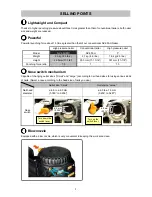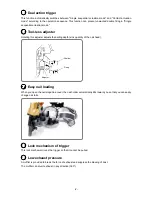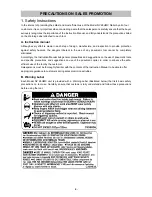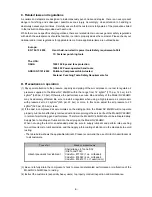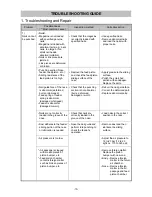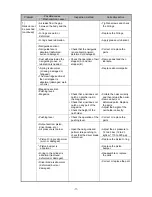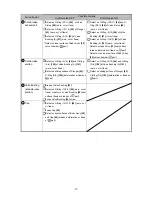
-12-
Problem
Possible cause
( *: Most-common cause)
Inspection method
Corrective action
• Cylinder inner surface is
abnormal (packed with
dust or worn).
• Check that nails can be
punched at 4.9 bar (5
kgf/cm
2
, 70 psi).
• Remove dust and then
lubricate.
• Replace the part.
• Head valve sliding surface
is abnormal (seized or
damaged, or lubrication
needed).
• Perform idle punching to
check punching operation.
• Replace the part.
• Apply grease.
• Head valve rubber (A) is
abnormal (removed or
damaged).
• Head valve spring is
abnormal (fatigued or
damaged).
• Replace the part.
<Control valve section>
• Plunger, valve piston,
valve bushing (A) or valve
bushing (B) is abnormal
(seized or damaged).
• Perform idle punching to
check that the driver blade
is not held in the down
position.
• Replace abnormal parts.
1)
Nails cannot
be punched.
(continued)
• O-rings or sliding surfaces
are worn or need
lubrication.
• Disassemble the control
valve section and check
the O-rings.
• Replace abnormal parts.
• Apply grease.
*• Adjuster is raised too high
for short nails.
• Check that the adjuster is
not raised too high.
• Turn the adjuster lower
(lower the pressure).
• Nails are not completely
fed into the injection port.
*• Unspecified nails are
used.
• See item 1).
• See item 1).
*• Driver blade is worn.
• Check that the driver
blade tip is not abnormally
worn.
• Replace the part.
2)
Nails are
punched but
bent.
• Workpiece is too hard.
• Check if a nail is bent even
when punched into soft
wood.
• Nailer cannot be used
because the material is
beyond its applicable
range.
• Adjuster is incorrectly set.
• Set the adjuster to the
optimum position.
• Air pressure is too low.
• Turn the adjuster to the
lowest position and then
punch nails.
• Adjust air pressure to
12 to 23 bar (12 to 23
kgf/cm
2
, 170 to 320 psi).
3)
Nails cannot
be
completely
punched
into the
workpiece:
the heads
cannot be
made flush.
• Workpiece is too hard.
• Check if a nail is bent even
when punched into soft
wood.
• Nailer cannot be used
because the material is
beyond its applicable
range.




